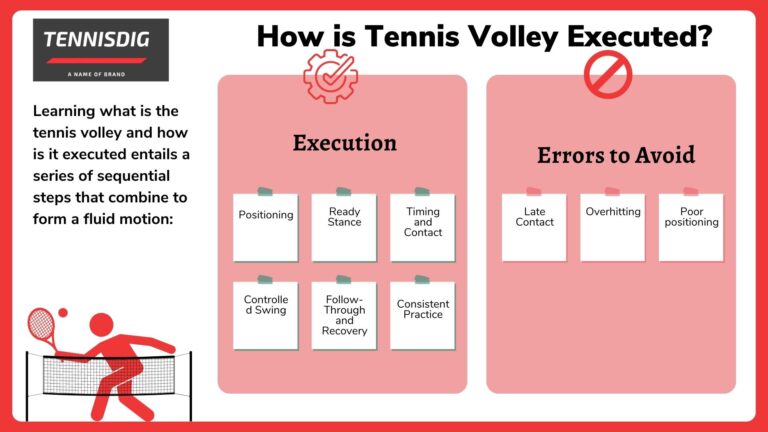Tennis is a skill, strategy, and finesse ballet in which every shot speaks for itself as a tale. One often-heard phrase in this sport is ‘tennis volley’ which piques the interest of many tennis fans, compelling them to search for what is the tennis volley and how is it executed.
The tennis volley is a riveting chapter among many significant aspects. It requires utmost precision and perfecting the art of time while playing. Let’s see what is the tennis volley and how is it executed so you can master the skill.
Defining Tennis Volley
A volley is a shot in tennis that is made by hitting the ball before it bounces on your side of the court. It is a rapid maneuver near the net that requires quick reactions and a strong eye. The volley may be a game-changing moment, allowing players to control the tempo and direction of the game.
How Many Volleys Are There in Tennis?
In tennis, there are a maximum of three hits per side. You can only hit the ball once in succession while playing.
How is Tennis Volley Executed?
Learning what is the tennis volley and how is it executed entails a series of sequential steps that combine to form a fluid motion:

Positioning
Proper placement is essential before attempting a volley. To intercept the ball early, a player must be close to the net, ideally within a few feet. Anticipation is essential because it lets the player respond quickly to the opponent’s stroke.
Ready Stance
A compact yet comfortable posture characterizes the ready stance for a volley. The knees are slightly bent, the weight is evenly distributed on both feet, and the racket is ready at the net. This posture allows for agility and fast movement in any direction.
Timing and Contact
As the opponent’s shot approaches, timing becomes critical. A good volley demands perfect timing to meet the ball at the proper moment. The contact point should be in front of the torso to ensure control and precision. To angle the ball efficiently, the racket face must be open.
Controlled Swing
A volley swing is shorter and more controlled than a groundstroke swing. A solid wrist and forearm is required to guide the racket into clean contact with the ball. Rather than creating power, the aim is to redirect the ball accurately.
Follow-Through and Recovery
A quick follow-through after striking the ball helps retain control and direction. After performing the volley, the player quickly returns to their ready position, anticipating the opponent’s next move.
Consistent Practice Makes You Perfect!
It requires a lot of practice to understand what is the tennis volley and how is it executed. Consistent practice with regular repetitions in developing the timing, coordination, and precision is necessary for this quick shot. Drills, solo and with a partner, can help sharpen the volleying abilities.
Common Errors to Avoid
Even experienced players might make mistakes when performing the perfect volley. Among the most prevalent errors are:
Late Contact
When you hit the ball too late, you lose control and direction.
Overhitting
Excessive force can cause the ball to fly out of bounds.
Poor positioning
Being too far or close to the net impairs a player’s ability to perform a volley successfully.
The Bottom Line
The tennis volley is a tribute to the sport’s grace and accuracy. It is not just about hitting the ball before it hits the ground; it is an art form that requires technique, timing, and deft moving. It takes time, attention, and an unrelenting devotion to hone your knowledge of what is the tennis volley and how is it executed.
So, the next time you watch a tennis tournament, pay attention to the players at the net as they execute those rapid and elegant volleys, and marvel at the skill behind each exact action.

